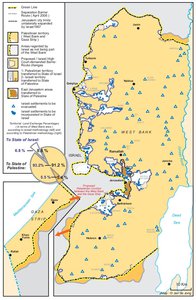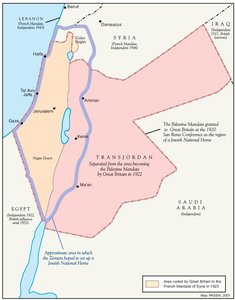PALESTINE UNDER THE BRITISH MANDATE
Map Details
The decision to award Britain the Mandate for Palestine in 1920 was guided by the provisions of the Treaty
of Versailles, drawn up at the 1919 Paris Peace Conference following WW1. There, the establishing
Covenant of the League of Nations stated, in Article 22, that “certain communities formerly belonging to the
Turkish Empire have reached a stage of development where their existence as independent nations can be
provisionally recognized, subject to the rendering of administrative advice and assistance by a Mandatory
until such time as they are able to stand alone.”
The announcement made in 1920 at the San Remo Conference allotted the Mandate for Palestine to
Britain, but it was not until 1923, after the League of Nations approved and ratified its terms, that the
Mandate officially came into full force. Drawing up the terms of the Mandate, Britain drew on the Balfour
Declaration and the government’s position, “in favor of the establishment in Palestine of a national home for
the Jewish people.” Article IV of the Mandate document invited the Zionist Organization to, “take steps in
consultation with his Britannic Majesty’s Government to secure the cooperation of all Jews who are willing to
assist in the establishment of the Jewish national home.” Other articles committed Britain to facilitating and
encouraging Zionist settlement and land acquisition. The final draft of the Mandate was drawn up in 1922.
That same year, the first full British census was conducted in Palestine, revealing the Jewish population to
be 11.4% of the total. Of these, at least 32.2% had immigrated since the British took power in 1918.
Winston Churchill’s June 1922 White Paper on Palestine officially divided the territory of the original
Mandate (which had potentially conjoined Transjordan and Palestine), and thereby confined the terms of the
Mandate to the territory of Palestine. With the approval of the League of Nations in September 1922, Britain
thus formalized the territorial boundaries of Transjordan and Palestine, limiting its approval for the
establishment of a Jewish national home to Palestine. Soon after, in April 1923, Britain recognized the
Hashemite Amir Abdullah as the legitimate ruler of the autonomous Emirate of Transjordan.
Following the 1920 San Remo announcement, Palestinian leaders presented their case before the British
government, in an effort to reverse the draft clauses of the Mandate relating to the Jewish national home,
but again in vain. With the US Congress formally endorsing British pro-Zionist policies and the content of
the Balfour Declaration on 21 September 1922, the Palestinians found themselves yet further distanced
from decision-making processes. Domestic political activities were relentlessly thwarted by the British, who
were not afraid to employ force and severe punishments in their drive to smother the many popular protests,
strikes and boycotts initiated by the Palestinian National Congress and the national political parties.
By virtue of Article IV of the Mandate, the Jewish Agency (JA) was formed in Palestine with the express
purpose of facilitating the foundation of the Jewish national home in Palestine. The JA was to act as the
unofficial Jewish government in Mandate Palestine and as such was tied closely with the British
administration; its first head was Frederick Kisch, a British colonel and Zionist. Kisch encouraged his Zionist
colleagues to learn from his British compatriots and sponsors in order to facilitate their development of an
independent administrative system in Palestine. The Zionist camp was, though, split over the exclusion of
Transjordan from the terms of the Mandate. The WZO leadership was content to quietly seek Amir
Abdullah’s recognition of a Jewish state in Palestine, in exchange for the dropping of Zionist demands to
settle east of the Jordan. Others, led by Vladimir Jabotinsky of Poland, rejected any compromise and
insisted on the forcible and accelerated colonization of both Palestine and Transjordan.
Related Maps
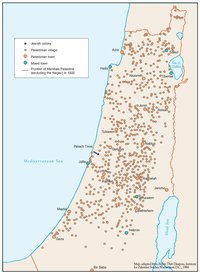
OTTOMAN PALESTINE, 1878
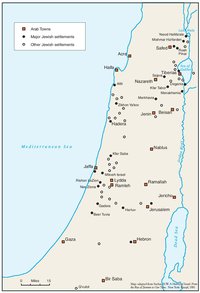
ARAB TOWNS AND JEWISH SETTLEMENTS IN PALESTINE, 1881-1914

THE SYKES-PICOT AGREEMENT, 1916
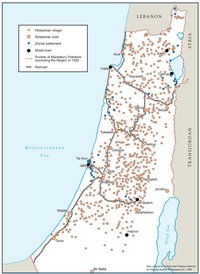
THE BEGINNING OF THE BRITISH MANDATE, 1920
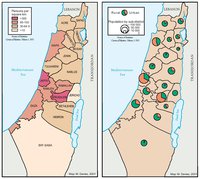
THE DEMOGRAPHY OF PALESTINE, 1931
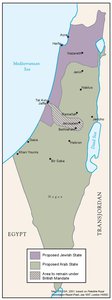
THE PEEL COMMISSION PARTITION PROPOSAL, 1937

THE WOODHEAD COMMISSION PARTITION PROPOSALS, 1938
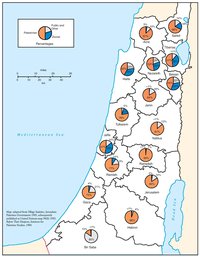
PALESTINIAN AND ZIONIST LANDOWNERSHIP BY SUB-DISTRICT, 1945
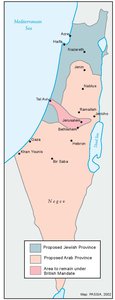
THE MORRISON-GRADY PARTITIONED TRUSTEESHIP PLAN, 1946
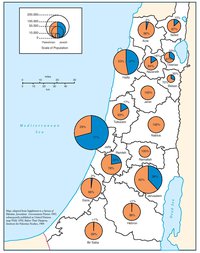
POPULATION OF PALESTINE BY SUB-DISTRICT, 1946
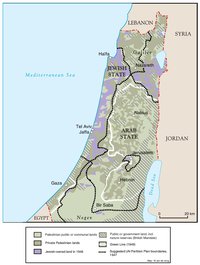
LAND OWNERSHIP IN PALESTINE, 1948
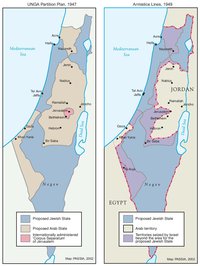
THE UNGA PARTITION PLAN, 1947 – THE 1948 WAR & THE 1949 ARMISTICE LINES
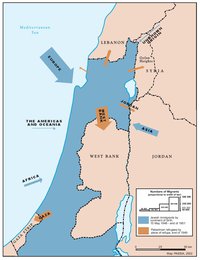
POPULATION MOVEMENTS, 1948-1951
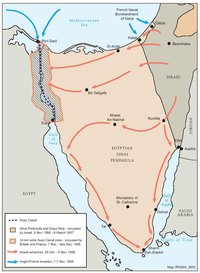
THE SUEZ WAR, 1956
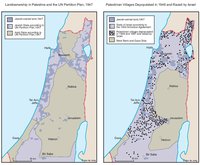
LAND OWNERSHIP IN PALESTINE AND THE UN PARTITION PLAN - PALESTINIAN DEPOPULATED AND DESTROYED VILLAGES, 1948-1949
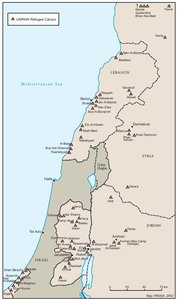
THE PALESTINIAN DIASPORA, 1958
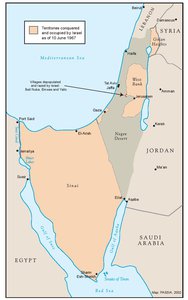
THE NEAR EAST AFTER THE JUNE 1967 WAR
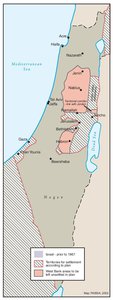
THE ALLON PLAN, JUNE 1967
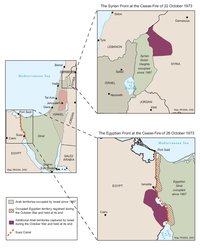
THE OCTOBER WAR, 1973
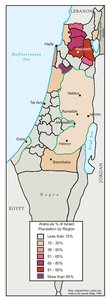
THE PALESTINIANS INSIDE ISRAEL, 1977
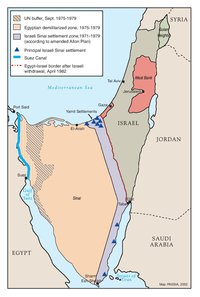
THE CAMP DAVID ACCORDS, 1978-1979

ISRAELI SETTLEMENT MASTER PLANS, 1976-1991
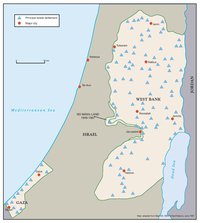
THE 1991 MADRID PEACE CONFERENCE & ISRAELI SETTLEMENTS
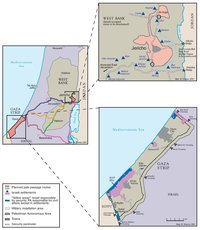
GAZA-JERICHO (OSLO I) AGREEMENT, CAIRO, 4 MAY 1994

INTERIM (OSLO II) AGREEMENT, TABA, 28 SEPTEMBER 1995
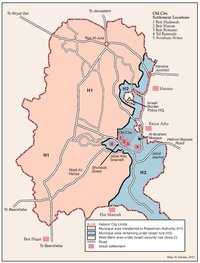
HEBRON PROTOCOL, 15 JANUARY 1997
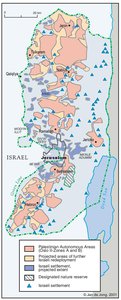
WYE RIVER MEMORANDUM, 23 OCTOBER 1998
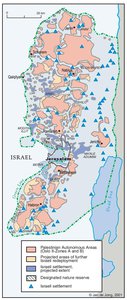
SHARM ESH-SHEIKH AGREEMENT, 4 SEPTEMBER 1999
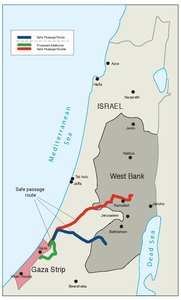
PROTOCOL CONCERNING SAFE PASSAGE BETWEEN THE WEST BANK AND THE GAZA STRIP, 5 OCTOBER 1999

GAZA, 2000

WEST BANK AND GAZA STRIP, MARCH 2000
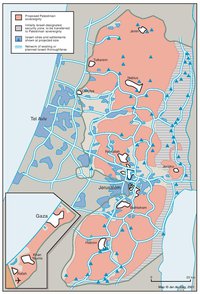
CAMP DAVID PROJECTION, JULY 2000
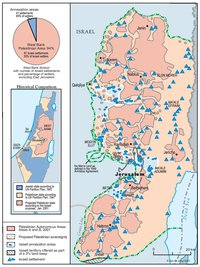
TABA TALKS PROJECTION, JANUARY 2001
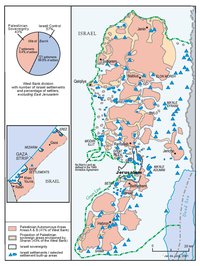
THE SHARON PROPOSAL, SPRING 2001
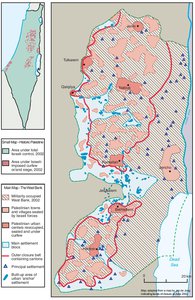
THE REINVASION OF THE PALESTINIAN TERRITORIES, 2001-2002
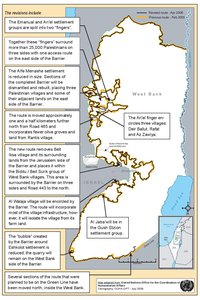
THE ROAD MAP, 2003
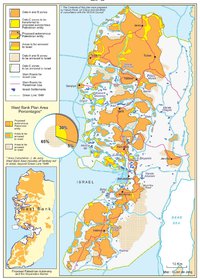
THE GENEVA INITIATIVE AND ACCORD, 2003
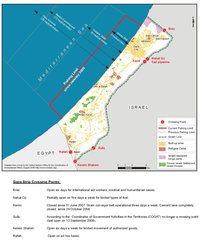
THE ISRAELI DISENGAGEMENT PLAN, 2003-2005

AGREED DOCUMENTS ON MOVEMENT AND ACCESS FROM AND TO GAZA, 2005
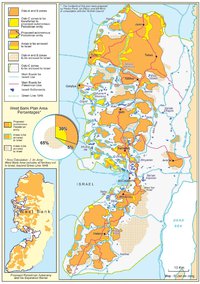
THE SETTLERS' PLAN FOR PALESTINIAN AUTONOMY, 2006

THE GAZA STRIP TODAY (2014)
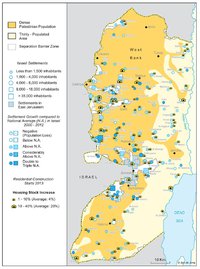
THE WEST BANK TODAY (2014)
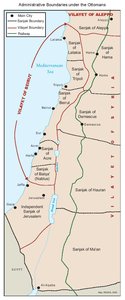
ADMINISTRATIVE BOUNDARIES

HEBRON
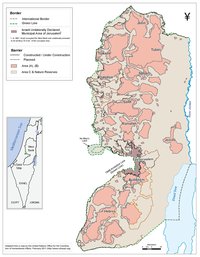
Area C
